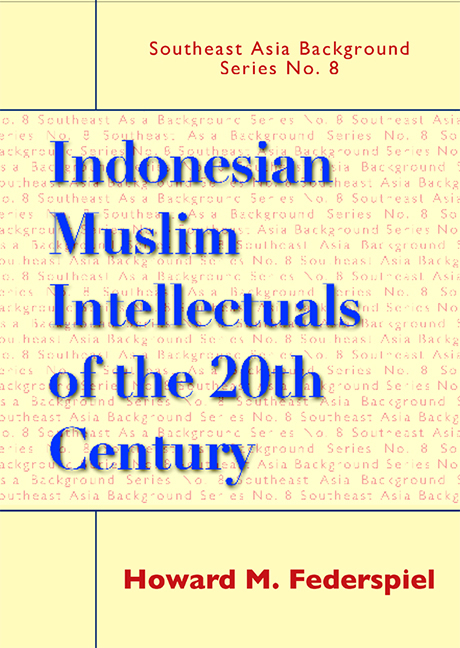5 - The Early New Order Period
Published online by Cambridge University Press: 21 October 2015
Summary
Politically, the early New Order period, from 1966 to 1974, was marked by the rise of an authoritarian state under the leadership of President Suharto, with support from the army, entrepreneurial business, civil servants, a technological elite, and creditor nations from Europe and North America. Political power was consolidated in the national executive, with the legislature having very limited functions and political parties having almost no influence. National economic development was stressed, supported with large loans from the World Bank and the Asian Development Bank. As a result, financial institutions, the education system, the industrial base, transportation, and communications were all made targets of development. In religious matters the regime attempted to remove Islam from its earlier association with politics, yet still have all religions in the country support the modernization drive as they provided spiritual guidance to the Indonesian citizenry.
Pancasila, discussed earlier, was regarded as the definitive statement concerning the role of religion in the state. Muslims were expected to accept government interpretation of Pancasila without question. Some Muslims had difficulty accepting these limitations, but reluctantly were brought into line during this period. But still this was a transitional time period when very unsettled political and economic conditions existed at the beginning and which slowly became stable as the New Order government brought competing political groups into line or eliminated them as participants.
At the end of the Guided Democracy era a number of “technocrats” trained in the West, primarily in the United States, had an opportunity to remake government as Indonesian politics shifted from association with the “leftist” states over to association with those nations under the international umbrella of the American-European alliance. The most notable of these newly-educated elites were the economic administrators, termed the “Berkeley Mafia” because several of them received advanced degrees at the University of California (Berkeley).
- Type
- Chapter
- Information
- Indonesian Muslim Intellectuals of the Twentieth Century , pp. 61 - 72Publisher: ISEAS–Yusof Ishak InstitutePrint publication year: 2006



